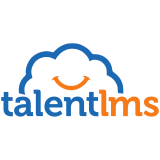This informal CPD article, ‘Navigating the AI skills gap with upskilling and reskilling‘, was provided by Christina Gialleli, Director of People Ops at Epignosis, the parent company behind TalentLMS, on a mission to empower organizations and their people on the path to greatness through impactful learning experiences.
Recent tech advancements have disrupted the workplace, and AI is at the forefront of this digital transformation. But it’s not just about making the workplace more efficient. The changing landscape requires new skills from employees. Recent data1 revealed that 43% of HR managers think their company will face a skills gap because of the rise of AI. In addition, more than half of workers expect AI to impact their industry and jobs.2 While one in three is already integrating AI into their daily tasks.
Fast-evolving technology is transforming how we work. However, it’s not all challenges. AI opens up new opportunities for employees to acquire new knowledge, focus on more fulfilling tasks, and unlock their productivity.
As AI takes center stage, companies are grappling with crucial questions: Which skills are vital for employees, and what's the path to develop them? In this article, we'll explore how to bridge the skills gap and pave the way for a brighter, AI-driven future with upskilling and reskilling.
The role of upskilling and reskilling in the AI era
Skill gaps in the workplace are like roadblocks. They slow down projects and make employees feel overwhelmed by their responsibilities. By removing those roadblocks, and overcoming skills gaps with training programs, companies can:
- Gain a competitive advantage: A well-trained workforce with up-to-date knowledge can develop innovative ideas and quickly respond to shifting industry trends, helping your company become a leader in the field.
- Cultivate a learning culture: When you invest in reskilling and upskilling, you create a workplace where learning never stops. This approach inspires your workforce to stay curious, be open to new knowledge, and remain adaptable.
- Improve retention rates: Employees who improve their skills are typically happier with their jobs and tend to stay longer in their company.
Building an employee upskilling and reskilling program
As organizations grapple with AI’s impact, they're realizing the value of employee upskilling and reskilling with many turning to these strategies to bridge the skills gap caused by AI. But what exactly do these programs include?
Essential skills for upskilling and reskilling in the AI era
AI training is not just about tech skills. The changing workplace also calls for skills that make for great teams. Beyond digital expertise—interpersonal abilities, cognitive skills, and self-management are keys to success.
These are the hard-hitting skills for the AI era:
- #1 Interpersonal skill: Active listening
- #1 Cognitive skill: Problem-solving
- #1 Self-management skill: Adaptability and agility
Training methods to upskill and reskill your workforce
Each person learns in their own special way. Some thrive in traditional face-to-face training, finding it engaging and interactive. Others, however, prefer the convenience of online courses, absorbing information at their own pace.
To meet these varied learning styles, you can offer a mix of training methods. It's also a great idea to gather employee feedback through surveys. This way, you can align your upskilling and reskilling goals with what most employees want.
Overcoming challenges in AI upskilling and reskilling
The road to employee upskilling and reskilling is not always an easy one, with just one-third of skill-development programs succeeding3. Knowing the potential challenges, though, can help address them.
Difficulty in identifying skill sets to target
Identifying the right skills to focus on through upskilling and reskilling can be quite challenging, given the ever-changing nature of AI. Additionally, it's not always straightforward to identify needed skills for specific teams or roles, or whether the emphasis should be on digital skills or human skills.
Solution: Conduct a thorough skills gap assessment to identify the AI-related skills and technologies your organization needs. Engage your employees in this process to gather insights about their current skills and future aspirations. Consider using AI-driven tools for data analysis. Regularly reassess and adjust your training programs based on the evolving needs of your workforce.














